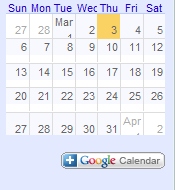Below you will find Seawind performance and specification information.
Seawind Specifications
|
CABIN DIMENSIONS |
||
|
Cabin Length |
105” |
|
|
Cabin Width |
||
|
Front |
52" |
|
|
Rear |
54" |
|
|
Cabin Baggage |
16 x 48" wide, 24” high, 10 cu ft |
|
|
AFT BAGGAGE |
||
|
Opening |
19” x 40” |
|
|
Length |
71" |
|
|
Volume |
30 cu ft |
|
|
Nose Deck Forward Storage |
3 cu ft |
|
|
Wing Span |
35 ft |
|
|
Height |
10 ft 2 in |
|
|
Overall Length |
27 ft 2 in |
|
|
Ground Clearance |
8.5 in |
|
|
Power |
310 hp |
|
|
Engine |
Lycoming IO-540-K1G5 (300 hp) Continental IO-550-N |
|
|
Propeller |
McCauley 3-blade |
|
|
76” Constant Speed |
||
|
Wing Area |
163 sq. ft. |
|
|
Wing Loading |
20.81 lbs/sq ft |
|
|
Power Loading |
10.97 lbs/hp |
|
|
Maximum Gross Weight |
3400 lbs |
|
|
Standard Empty Weight |
2300 lbs |
|
|
Equipped Empty Weight |
2350 – 2400 lbs |
|
|
Useful Standard |
1150 lbs |
|
|
Useful Equipped |
1000 – 1150 lbs |
|
|
Fuel Capacity Mains |
80 US gals |
|
|
Long Range – Aux Tanks |
30 US gals |
|
|
PERFORMANCE |
MPH |
KNOTS |
|
Sea Level Speed 100% Power |
200 |
174 |
|
Cruise 75% Power (8,000 ft) |
190 |
165 |
|
Cruise 65% Power (8,000 ft) |
180 |
156 |
|
Cruise 55% Power (8,000 ft) |
169 |
147 |
|
Fuel Burn at 55% Power |
12.8 gph |
|
|
Max. Range (no reserve main) |
1040 |
905 |
|
with Extended Fuel Range |
1460 |
1270 |
|
Rate of Climb |
1250 fpm |
|
|
B/Rate of Climb Speed |
99 |
86 |
|
B/Angle of Climb Speed |
74 |
65 |
|
Stall Speed |
||
|
Clean |
72 |
63 |
|
Flaps & Wheels |
60 |
54 |
|
Service Ceiling |
18,000 ft |
|
|
LAND |
WATER |
|
|
Take Off Distance |
||
|
3200 lbs |
870 ft |
1100 ft |
|
3400 lbs |
1175 ft |
1400 ft |
|
Over 50’ Obstacle |
1175 ft |
1400 ft |
|
Landing Distance |
770 ft |
620 ft |
|
Over 50’ Obstacle |
1300 ft |
1150 ft |
|
Performance figures are the result of actual test data for the Lycoming 300 hp engine. All performance figures are for a sea level standard day and gross weight of 3200 lbs., unless otherwise stated. Specifications are subject to change without notice. New performance specifications will be updated during certification testing. Copyright SNA. |
||
LAND TAKE-OFF:
The Seawind 300C accelerates quickly down the runway. At 60 knots (70 mph), a one-hand rotation is applied and the craft lifts off between 60 and 70 knots.
CLIMB:
With the landing gear retracted and the flaps set to zero, the Seawind 300C will climb dramatically to altitude.
CRUISE:
The cruise configuration is with flaps reflexed to -10°. Once trimmed straight and level, the Seawind 300C is truly a hands-off machine
LAND LANDINGS:
Landings on land are normal with a gear- down speed of 120 knots (140 mph) maximum, and a flap-down speed of 110 knots (120 mph). The pattern speed is 80 to 90 knots with flaps at 20° as you apply a little up trim to what feels naturally comfortable. Full flaps are applied and propeller set to high rpm on the final leg with the speed at 80 knots. After crossing the threshold at 70 knots, flare to a touchdown speed of 55 knots.
WATER LANDINGS:
Landings on water are virtually the same as land landings except, of course, the landing gear is up. Final approach is at 80 knots, with full flap, at high rpm. A few feet above the water, the Seawind 300C is leveled and slowed to 70 knots and the nose is raised to about four degrees. Throttle back and the Seawind 300C lands on the step at 55 knots.
STEP TAXIING:
Step taxiing can be performed with full flaps or reflexed flaps. The time onto the step is a couple of seconds quicker with zero flaps. The wings are held level and steering is performed with the air rudder.
WATER TAKE-OFF:
Water takeoffs are comfortable. The Seawind 300C rises onto the step virtually by itself. A bit of up elevator is applied as the bow wave moves by. The controls are then relaxed and with full flaps at 55 knots, the Seawind 300C flies itself off the water.
TURNS:
Like any amphibian of high thrust line aircraft, turns should be coordinated with rudder and ailerons.
PITCH CONTROL:
The Seawind 300C has superb pitch control. A full power go around just above the water is easily executed with one arm pull back. The nose will not drop.
CROSS WIND LANDINGS:
Carry a little power in a cross wind landing to make the air rudder more effective. Idling the power tends to block the flow over the air rudder. So, apply just a little power.
STALLS:
Stalls are gentle and straight ahead, with a warning buffet.
